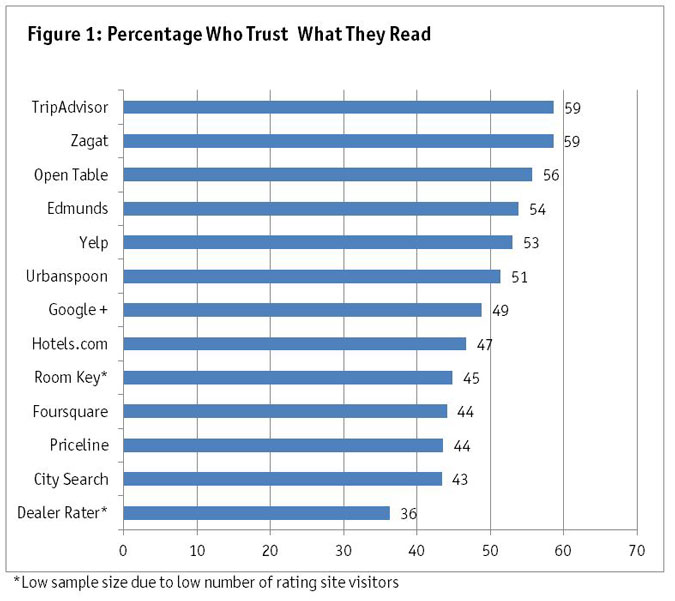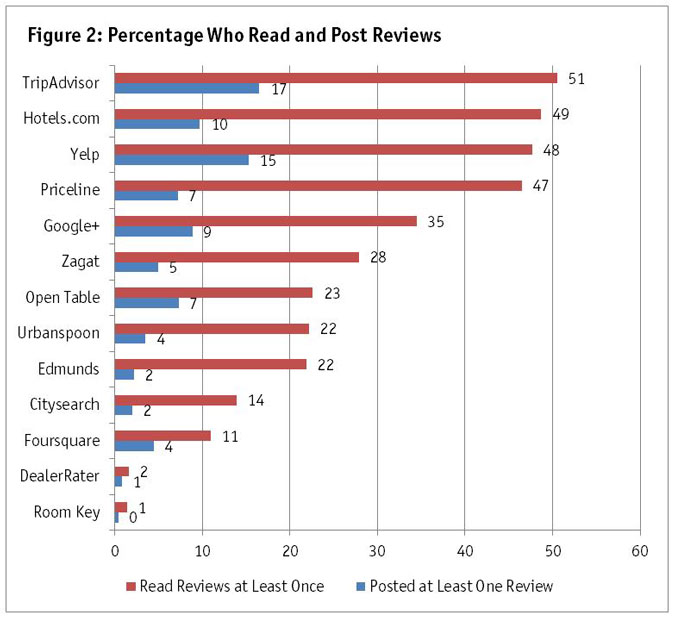Editor's note: David Ensing is vice president, voice of the customer, at Maritz Research, St. Louis. He can be reached at dave.ensing@maritz.com. This article appeared in the October 28, 2013, edition of Quirk's e-newsletter.
Now more than ever, online ratings sites are an important part of consumers' purchase decisions. How many times have you searched for a review about a product you were thinking of buying, a hotel where you might be staying or a restaurant where you could be eating?
As the importance of positive online ratings grows, so has the incentive for businesses to make sure they are portrayed well at these sites. Most businesses do this properly - by improving the customer experience. But some businesses seem to take the late W.C. Fields' approach: If a thing is worth having, it's worth cheating for.
Indeed, recently we've seen a wave of stories about companies faking online reviews.
- In September, the New York Attorney General settled a lawsuit with 17 companies that offered to post fake reviews for a fictitious yogurt store the AG's office had set up.
- Edmunds.com sued a social media reputation management firm for attempting to post fake reviews on Edmunds for its auto dealership customers.
- Yelp sued a law firm for posting fake reviews.
- Yelp sued the parent company of the Web sites BuyOnlineReviews.com and BuyYelpReview.com.
- Google removed large quantities of dealership surveys from its site because they were suspected of being fakes.
Given these developments, we at Maritz wanted to find out how consumers view information at rating sites. Do they trust it? How do they use it?
To answer those questions, we conducted an online panel study in April 2013 asking 3,404 people about their use of dedicated customer review and rating sites. Generally, we found four things:
- Of those who use rating sites, about 25 percent think the information presented is biased or unfair.
- Even those who think the information is fair use techniques to separate false or biased information from good information.
- Customer ratings of how much they trusted the information varied significantly from site to site.
- Many more people read reviews at rating sites rather than post reviews and there are significant differences between readers and posters.
Integrity of information
We asked rating-site users to rate the integrity of information at rating sites. Nearly 25 percent thought the information presented is unfair, with 16 percent saying it is overly negative and 9 percent saying it is overly positive. The remaining 75 percent thought the information presented on rating sites is generally fair. Interestingly though, even these respondents pointed out that they need to separate trustworthy reviews from non-trustworthy ones - usually due to concerns that some reviews are naturally biased or fake. For example:
"I can usually tell when a review is fake - if it is overly positive. I usually try to read a range of reviews. If there are not enough reviews, I don't usually take it seriously. I don't think Web sites can prevent all companies from posting fake reviews but by reading the various reviews, I can usually reach an accurate conclusion."
"I'm not sure how objective it is. I think that people tend to only share either the good or the bad, which usually does not give you a real balanced opinion."
"I think the reviews are for the most part honest but I believe that the site is selective in the reviews it posts."
"Some are credible and some are biased or questionable."
"Generally reliable if one disregards the top 5 percent and the bottom 5-10 percent of comments."
"Take everything with a little skepticism but if enough people say it then it's more believable."
"I believe that a lot of the information is put there by people who work for the companies to show positive information."
How much they trust
We also asked respondents to tell us how much they trust information at 13 high-profile rating sites using a five-point rating scale: Trust None of it, Trust Some of It, Trust About Half of It, Trust Most of It and Trust All of It.
Percentages of respondents who said they trust most or all of the information at the various sites ranged from 36 percent to 59 percent. Larger and more established sites seemed to be perceived as more trustworthy than newer and smaller sites but even at these sites, more than one-third of visitors are skeptical about much of the information. Figure 1 shows what percentage of those who read reviews trust most or all of the information.

Only read
We asked people about their reading and posting activity at each of 13 rating and review sites. Many more people only read reviews rather than write them (Figure 2).

Interestingly, sites seem to vary quite a bit on the ratio of readers to posters.
- Sites like Yelp, TripAdvisor and OpenTable have relatively low ratios of about three readers for every poster.
- Other sites like Edmunds, Priceline and Urbanspoon have higher ratios of between six and 10 readers for every poster. These differences are probably due to site characteristics.
- Edmunds is primarily a professional review site where customers can also leave their own reviews. Many visitors probably go there to read professional reviews.
- Priceline is not primarily in the review-generating business. Reviews are secondary to the site and people need to have booked through Priceline to leave a review.
- TripAdvisor and Yelp are first and foremost review sites. Thus, anyone can leave a review there and both companies take countermeasures to try to identify reviews left by people who did not actually experience the product or service they are rating.
Finally, we looked at the demographics of people who posted a review on at least one site versus those who only read reviews. We found that, compared to readers, posters tended to be younger and more affluent. As many researchers know from experience, these characteristics (especially being younger) correspond with being harder graders on surveys of customer experience. Thus, it would not be surprising if information left by real customers at rating sites is overly negative.
Not a crisis
The upshot seems to be that a significant minority of visitors feel rating-site information is unfair. However, those who believe it generally is fair still take precautions to weed out false information from good information - and even information left by real customers may be biased due to self-selection when choosing to post. While there is not a crisis of confidence yet, review sites must do more to improve the quality of information offered.
